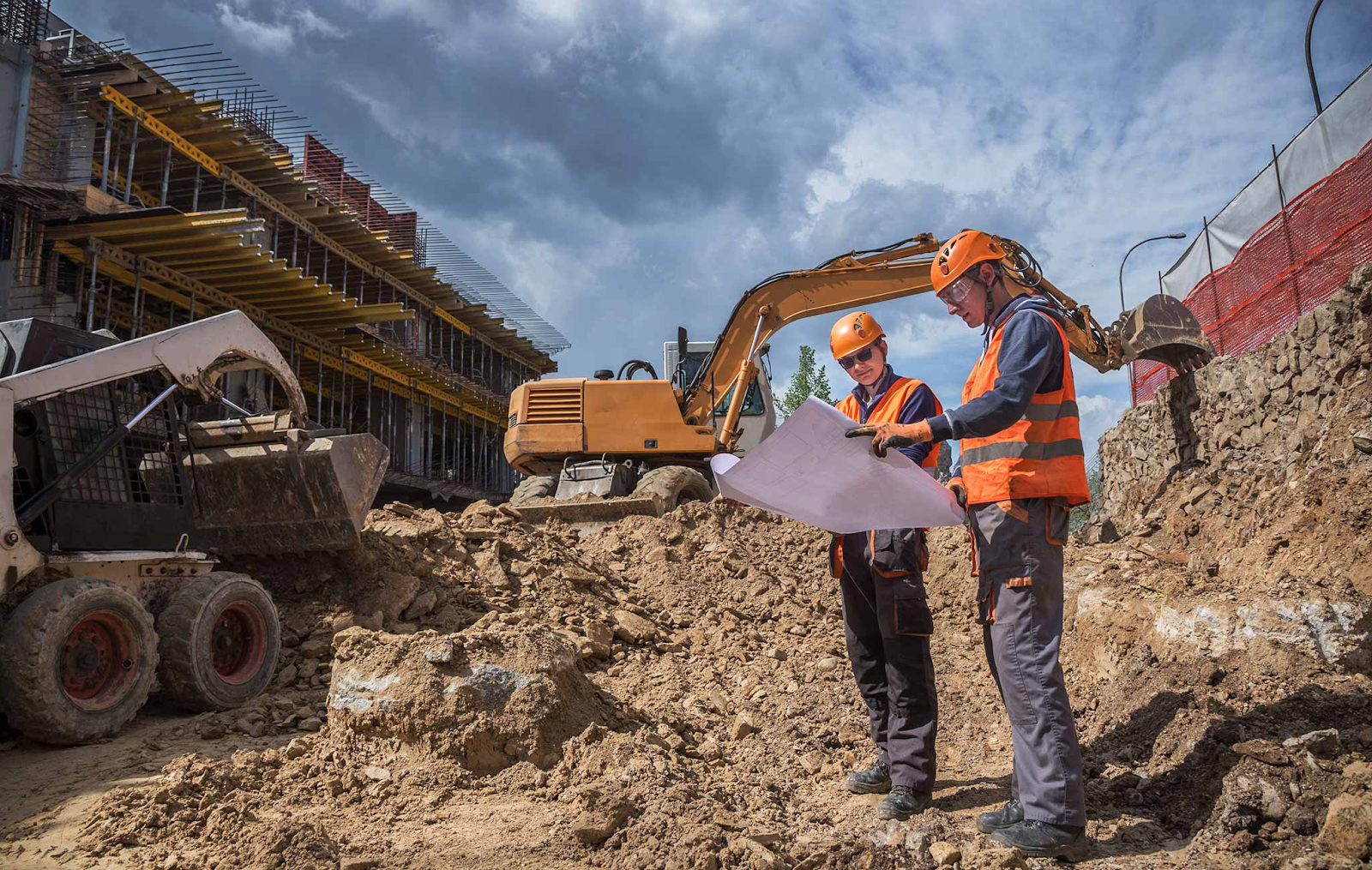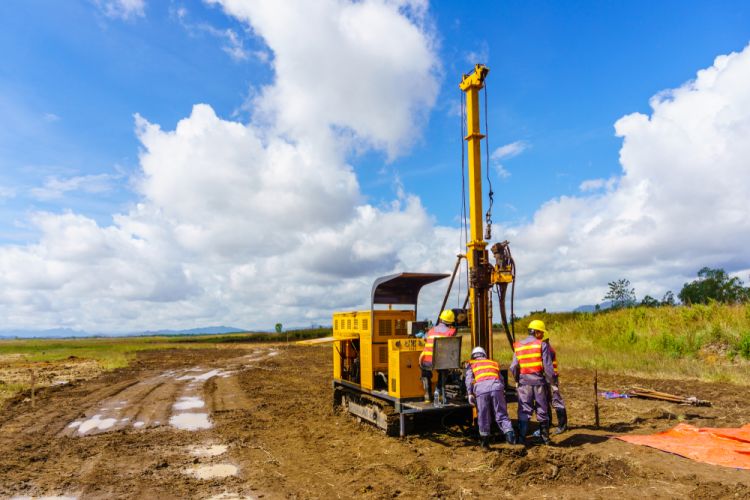Specialized Geotechnical Engineering Solutions for Dummies
Specialized Geotechnical Engineering Solutions for Dummies
Blog Article
Specialized Geotechnical Engineering Solutions Things To Know Before You Get This
Table of ContentsSpecialized Geotechnical Engineering Solutions for DummiesNot known Factual Statements About Specialized Geotechnical Engineering Solutions Specialized Geotechnical Engineering Solutions Can Be Fun For EveryoneThe Ultimate Guide To Specialized Geotechnical Engineering SolutionsGetting My Specialized Geotechnical Engineering Solutions To WorkOur Specialized Geotechnical Engineering Solutions Diaries
William Rankine, an engineer and physicist, developed an alternate to Coulomb's planet pressure concept. Albert Atterberg developed the clay uniformity indices that are still used today for soil classification. In 1885, Osborne Reynolds recognized that shearing causes volumetric extension of thick products and tightening of loose granular materials. Modern geotechnical engineering is claimed to have actually begun in 1925 with the publication of Erdbaumechanik by Karl von Terzaghi, a mechanical engineer and geologist. Terzaghi likewise established the framework for concepts of bearing capability of structures, and the concept for forecast of the price of negotiation of clay layers due to combination. Later on, Maurice Biot completely developed the three-dimensional soil loan consolidation theory, expanding the one-dimensional version previously developed by Terzaghi to much more basic theories and presenting the collection of fundamental equations of Poroelasticity.
Geotechnical engineers explore and determine the residential properties of subsurface conditions and products. They additionally create corresponding earthworks and retaining frameworks, tunnels, and framework foundations, and may manage and examine sites, which might better involve site surveillance along with the threat analysis and mitigation of natural threats. Geotechnical designers and engineering rock hounds execute geotechnical investigations to get details on the physical residential or commercial properties of soil and rock underlying and surrounding to a site to design earthworks and structures for proposed structures and for the repair work of distress to earthworks and structures brought on by subsurface problems.
All about Specialized Geotechnical Engineering Solutions
, which makes use of a thick-walled split spoon sampler, is the most usual method to collect disturbed samples.

Normally, the interface's precise geometry is unknown, and a simplified interface geometry is presumed. Limited inclines need three-dimensional models to be assessed, so most inclines are evaluated assuming that they are considerably broad and can be represented by two-dimensional versions.
Not known Factual Statements About Specialized Geotechnical Engineering Solutions

Measurement of quantities and evaluation of real conditions. It is improper for jobs whose style can not be check changed throughout building and construction.
Principles of Geotechnical Design. Soil Technicians and Structures. Interrupted soil homes and geotechnical layout, Schofield, Andrew N., Thomas Telford, 2006.
Specialized Geotechnical Engineering Solutions Can Be Fun For Everyone
Concepts and Practice of Ground Renovation. Ground Enhancement Principles And Applications In Asia. Design evaluation in rock auto mechanics.
Cengage Discovering, Stamford, 666 p. Atkinson, J., 2007. The mechanics of soils and structures. Taylor & Francis, N.Y., 442 p. Floating Offshore Wind Generators: Actions in a Sea state Pareto Optimal Designs and Economic Assessment, P. Sclavounos et al., October 2007. Nicholson, D, Tse, C and Penny, C. (1999 ). The Observational Method in ground design principles and applications.
7 Easy Facts About Specialized Geotechnical Engineering Solutions Explained
These records are tailored to meet the particular needs of a task and include design parameters and suggestions for the building of a series of manufactured structures. In addition to providing working as a consultant solutions covering locations such as incline stability and load-bearing capabilities for different materials, these engineers take on r & d activities to improve methods, devices, products understanding and evaluation covering whole lifecycles (Specialized Geotechnical Engineering Solutions).
Engineering the residential properties and mechanics of rocks including the application of dynamics, liquid technicians, kinematics and product technicians. This combines geology, soil and pop over to this site rock mechanics, and architectural design for the design and construction of structures for a series of civil engineering jobs. This field entails forecasting the performance of structure soil and rock content to a tons enforced by a structure, while considering performance, economic climate and safety.
Nonetheless, prices of pay generally increase as your expertise and skills expand, with standards pointing to a graduate beginning income of in between 18,000 and 28,000 each year in the UK. This rises to 26,000 to 36,000 with a few years of experience and after that reaching 40,000 to 60,000+ for elderly, legal or master engineers.
The Specialized Geotechnical Engineering Solutions PDFs
With the best application it is possible to understand the occupation and gain entry to a tough yet rewarding and crucial job. A rock hound would certainly require to retrain to become a geotechnical engineer, although there is lots of cross-over in between both professions, which can make this simpler. Rock hounds need to have an understanding of soils, rocks and other materials from a scientific perspective, while geotechnical engineers tale their understanding of issues such as dirt and rock auto mechanic, geophysics and hydrology and apply them to engineering and ecological tasks.
When beginning, these engineers will certainly often tend to work with less complex projects, developing knowledge and experience prepared for more tough work later on. Geotechnical designers tend to specialise in certain areas as they expand in experience, concentrating on specific facilities such as trains, roadways or water. These engineers also collaborate with sustainable power, offshore and onshore oil and gas, nuclear power, and a lot more.
Report this page